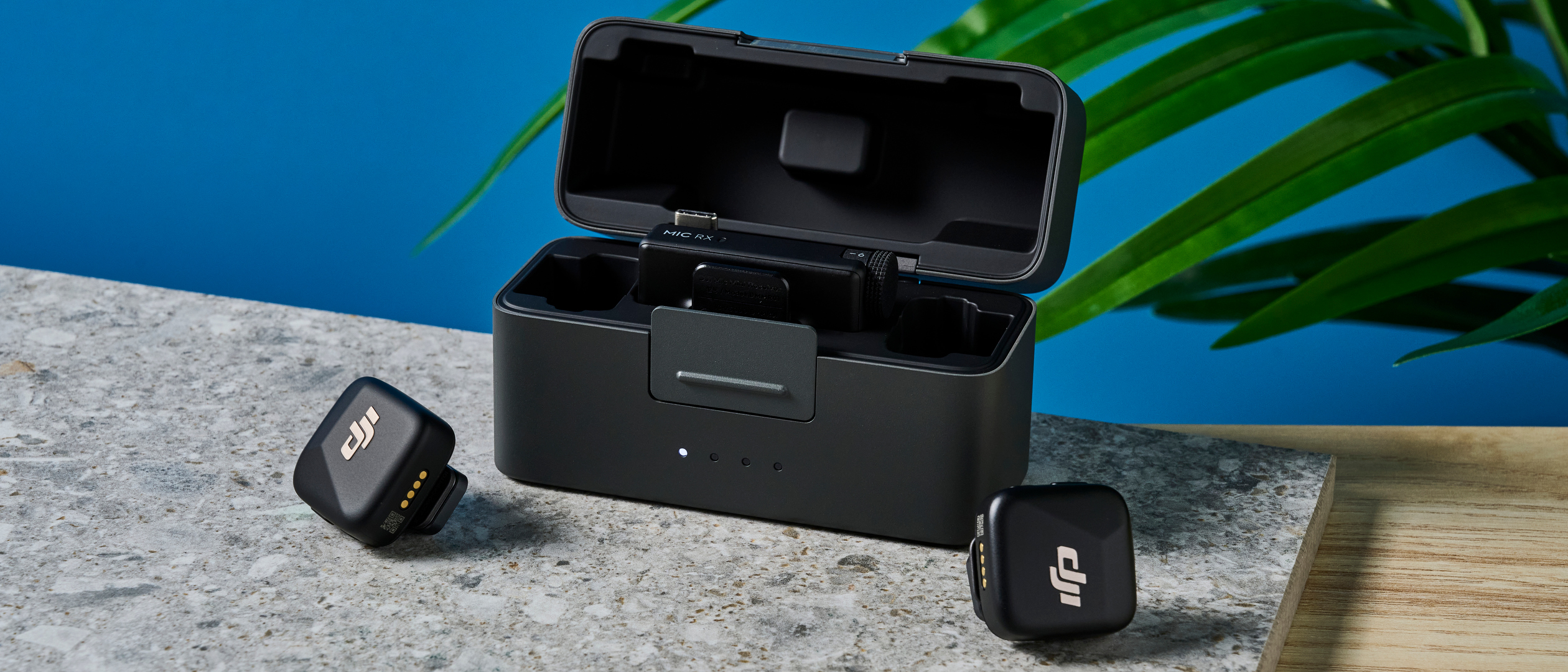Tom's Guide Verdict
The DJI Mic Mini is the ideal first microphone upgrade for new content creators who want to boost the quality of their audio. It's also a fine choice for more experienced creators who need a tiny microphone. This mic system is modular so can be scaled to your needs; it's also incredibly versatile, especially when paired with other DJI gear. It packs two levels of noise cancellation, and its omnidirectional mic works great for general content creation that prioritizes vocals. Pro features are absent, and the controls are rather fiddly, but this is a fine microphone at such a low price point.
Pros
- +
Great audio
- +
Two-level noise cancellation
- +
True wireless connectivity
- +
Affordable modular availability
- +
Seamless DJI integration
Cons
- -
Controls a little fiddly
- -
No pro features
Why you can trust Tom's Guide
The DJI Mic Mini is the latest wireless microphone from Chinese manufacturer DJI, and I’m not gonna beat around the bush here: I love it. It’s the little sibling of the DJI Mic 2, which in my opinion is one of the best microphones around for serious content creators. The Mic Mini packs many of the Mic 2’s most useful features, albeit with a stripped-down spec sheet to suit more casual creators, or those for whom compactness is paramount.
If you need a mic that’s powerful, portable, not too pricey, and best of all, truly wireless (I’ll explain what I mean later), then the Mic Mini is gonna be right up your street. Find out more in my DJI Mic Mini review.
DJI Mic Mini review: Specs
| Price | From $59 |
| Microphone type | Wireless omnidirectional |
| Max SPL | 120dB |
| 32-bit float recording | No |
| Noise cancellation | Yes, two-stage |
| Connectivity | Wireless ‘OsmoAudio’, Bluetooth, 3.5mm TRS/TRRS, USB-C, Lightning |
| Weight (TX) | 0.35 ounces |
| Weight (RX) | 0.62 ounces |
| Dimensions (TX) | 1.04 x 1.02 x 0.62 inches |
| Dimensions (RX) | 1.83 x 1.16 x 0.76 inches |
| Colors | Black (TX/RX); White (TX) |
DJI Mic Mini review: Price & availability
- Affordable
- Modular options

As with the DJI Mic 2, the Mic Mini offers creators a lot of flexibility based on their needs and budget. As I’ll cover below, the Mic Mini is a proper wireless mic, and its transmitters (TX) can connect wirelessly to phones and action cameras without the need for a receiver (RX). Just need a TX unit to pair with your DJI Osmo Action 5 Pro? Buy a single transmitter. Want 1 TX and an RX to use with a mirrorless camera? Get the 1TX + RX bundle.
| DJI Mic Mini | USD | GBP | AUD | EUR |
|---|---|---|---|---|
| TX + RX | $89 | £79 | AU$125 | €89 |
| 2TX + RX + Charging case | $169 | £145 | AU$245 | €169 |
| 1TX | $59 | £49 | AU$69 | €59 |
| Charging case | $49 | £45 | AU$89 | €49 |
Personally, I’d just go for the full monty 2TX + RX + Case bundle, which is priced incredibly competitively at just $169 / £145. The Mic Mini’s closest competitor in the casual creator market is the Rode Wireless ME, which will set you back $199 for a 2TX + RX bundle. The Rode is an aging system, though, with plenty of drawbacks versus the Mic Mini, and it isn’t worth the extra spend. I’ve owned the Wireless Me for around two years now, and will be swapping wholesale for the Mic Mini after this review.
DJI Mic Mini review: Design
- Tiny and lightweight
- No 3.5mm for Lavalier
- Magnet and clip mounts
The Mic Mini is absolutely tiny. Each square TX unit weighs only 0.35 ounces and measures just over an inch squared. The Rode Wireless ME uses the same square design of the Rode Wireless Pro, which seems clunky in comparison to the Mic Mini. The RX unit is also pretty dinky, at just 0.6 ounces and 1.8 x 1.1 inches, so it won’t get in the way on a camera either. As with all DJI products, the Mic Mini's build quality is second to none, especially the metal charging case.
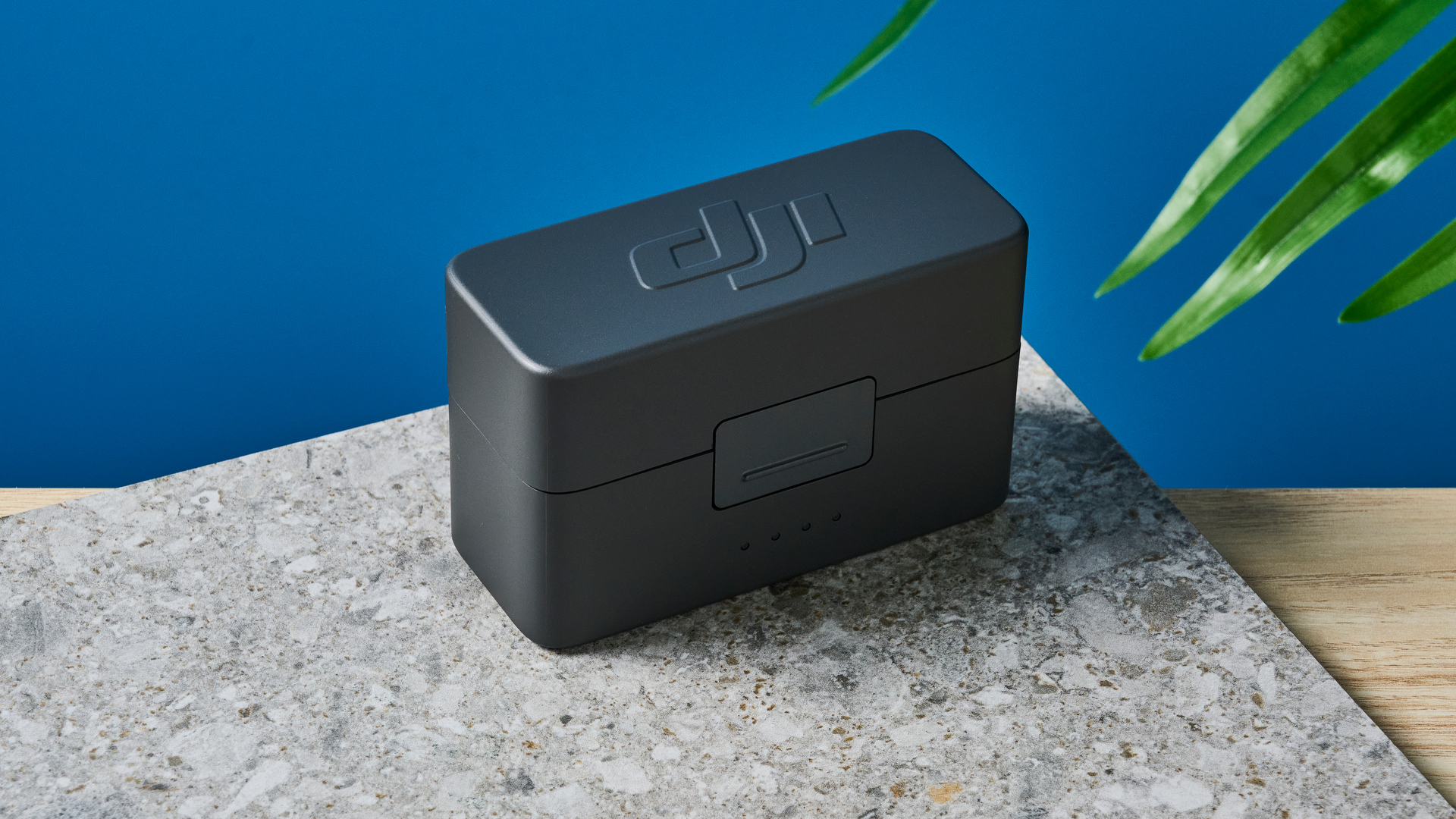
The Mic Mini TX units have no 3.5mm jack for lavalier hookup, but they’re so small and lightweight that I had no problem clipping a TX to the fly guard inside the chin of my motorcycle helmet (to where I’d usually run a wired Lav). The Mic Mini didn’t get in the way at all, was light enough to avoid pulling down the fly guard and dispensed with the need for a cable: Motovloggers, pay attention!
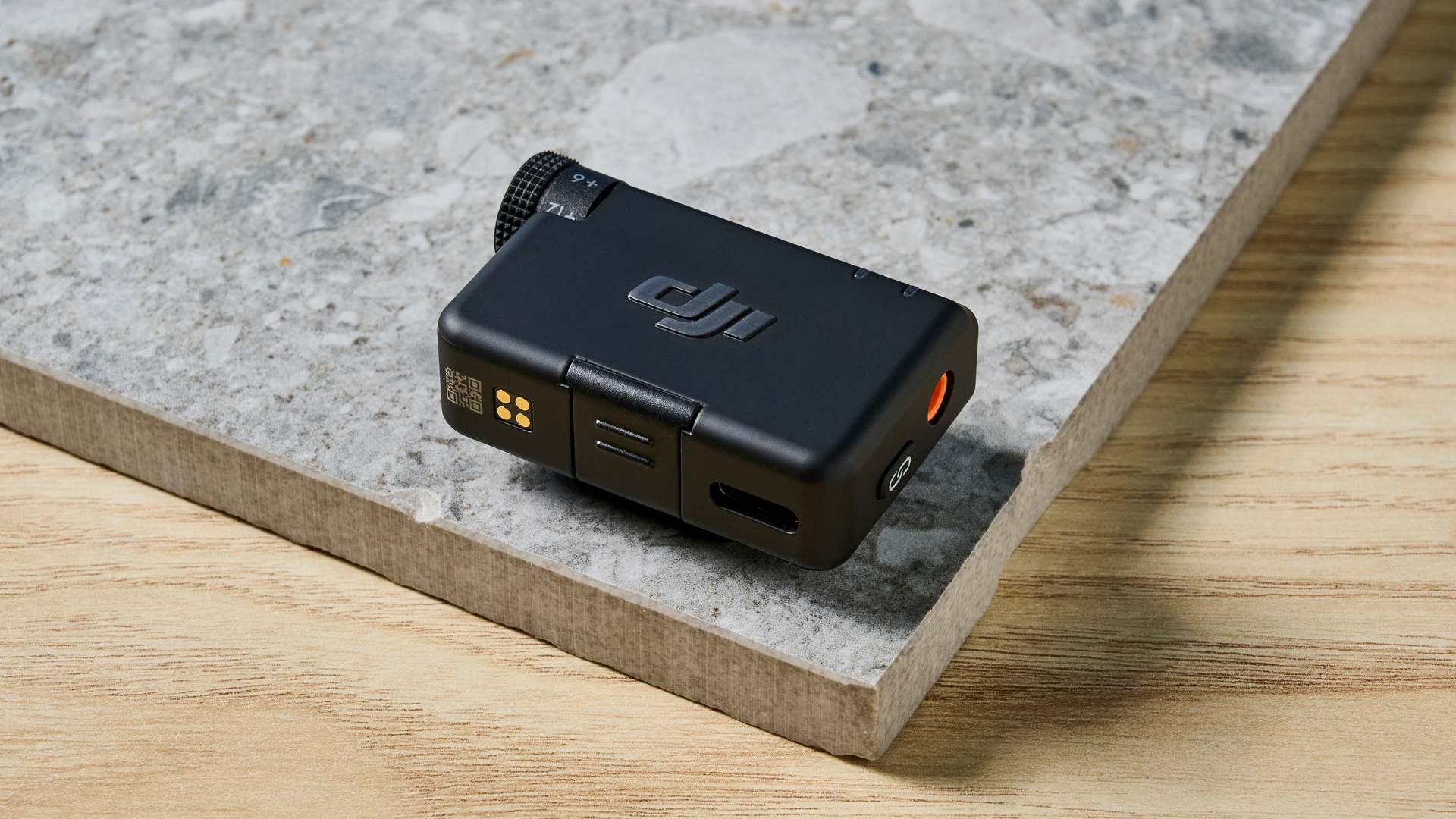
There’s a clip on each TX for attaching to clothing, and magnetic fasteners for discrete attachment under clothing. While secure, the clip is not cold-shoe compatible like the Rode Wireless ME, which prevents mounting the TX to cameras or rigs. The magnet is also quite small and was easy to displace. If you’re clever with pockets and clothing folds, you can actually secure the TX with both the clip and magnet — I found this to be the most secure method.
DJI Mic Mini review: Controls
- Very basic controls
- Best with DJI cameras
The Mic Mini’s onboard controls are incredibly basic, much like the Rode Wireless ME. The RX unit has a connection button, a power button and a gain dial, and that’s it. The TX units have power and connection buttons. I initially found myself missing the screen and jog wheel of the DJI Mic 2, before realizing that the Mic Mini is a much simpler device — there just aren’t enough features on it to warrant in-depth onboard controls.
Its only real adjustable features are gain, mono/stereo recording and noise cancellation. All of these can be tweaked via the interface of a DJI camera or through the DJI Mimo smartphone app when connected wirelessly. When hooked up traditionally by wire to the receiver, gain is adjusted on the RX unit and noise cancellation via the power button on the TX units.

Make no mistake, the beauty of this microphone lies in its size, versatility and simplicity, so there really isn’t much need for further controls. If you need more features and greater control, the Mic Mini is the wrong choice — you should be looking at the DJI Mic 2 instead.
DJI Mic Mini review: Connectivity
- Ultra versatile ‘true’ wireless
- Seamless integration with DJI cameras
- Impressive range
Like the DJI Mic 2, the DJI Mic Mini TX units can wirelessly connect directly to phones and action cameras, dispensing with the need to route via the RX unit wired into a camera — making it an incredibly versatile mic system. The Rode Wireless ME utilizes a wireless TX to RX connection, but the RX must still be wired in.
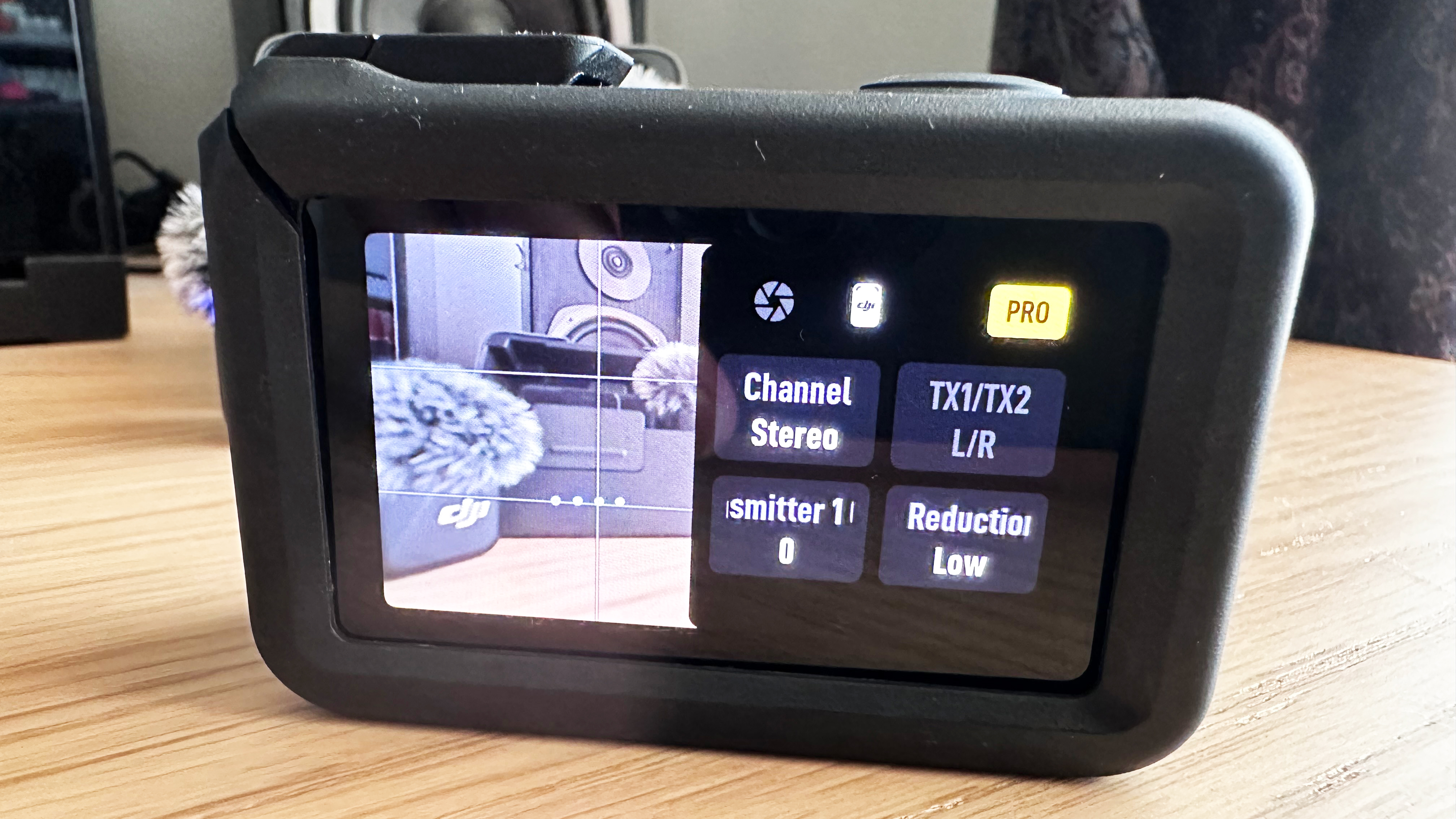
\Wireless hookup works best with DJI gear, namely the DJI Osmo Action 5 Pro, DJI Osmo Pocket 3 and DJI Osmo Action 4. Simply select the TX unit(s) from the audio menu on the camera and you’re good to go. You’ll then have access to TX settings as you would via an RX unit. For smartphones and other action cameras, the TX units pair via Bluetooth. That means you can hook the Mic Mini up to the DJI OA5 Pro’s main rivals, the Insta360 Ace Pro 2 and GoPro Hero13 Black, although the audio quality suffers a noticeable hit over Bluetooth.
The Mic Mini sports an impressive connectivity range of 400 meters, or 1316 feet, unobstructed — a fair chunk more than the 260 meters of the Rode Wireless Pro and 250 meters of the DJI Mic 2. In real terms, the range will be a lot shorter due to interruptions, but it demonstrates the Mic Mini’s stable connection.
DJI Mic Mini review: Audio quality
- Solid audio quality for the money
- 2-level noise cancellation
- No 32-bit float
Now, onto the most important bit. The Mic Mini’s audio quality is very respectable given its price. It uses an omnidirectional microphone — these types of mic are best for minimizing wind buffeting, so the ideal choice for shooting outdoors. They also reduce intrusive plosive popping sounds versus unidirectional mics, making them better for primarily vocal-based recording. As their “omni” eponym suggests, they record sound from all around, too, giving you flexibility with mic placement.
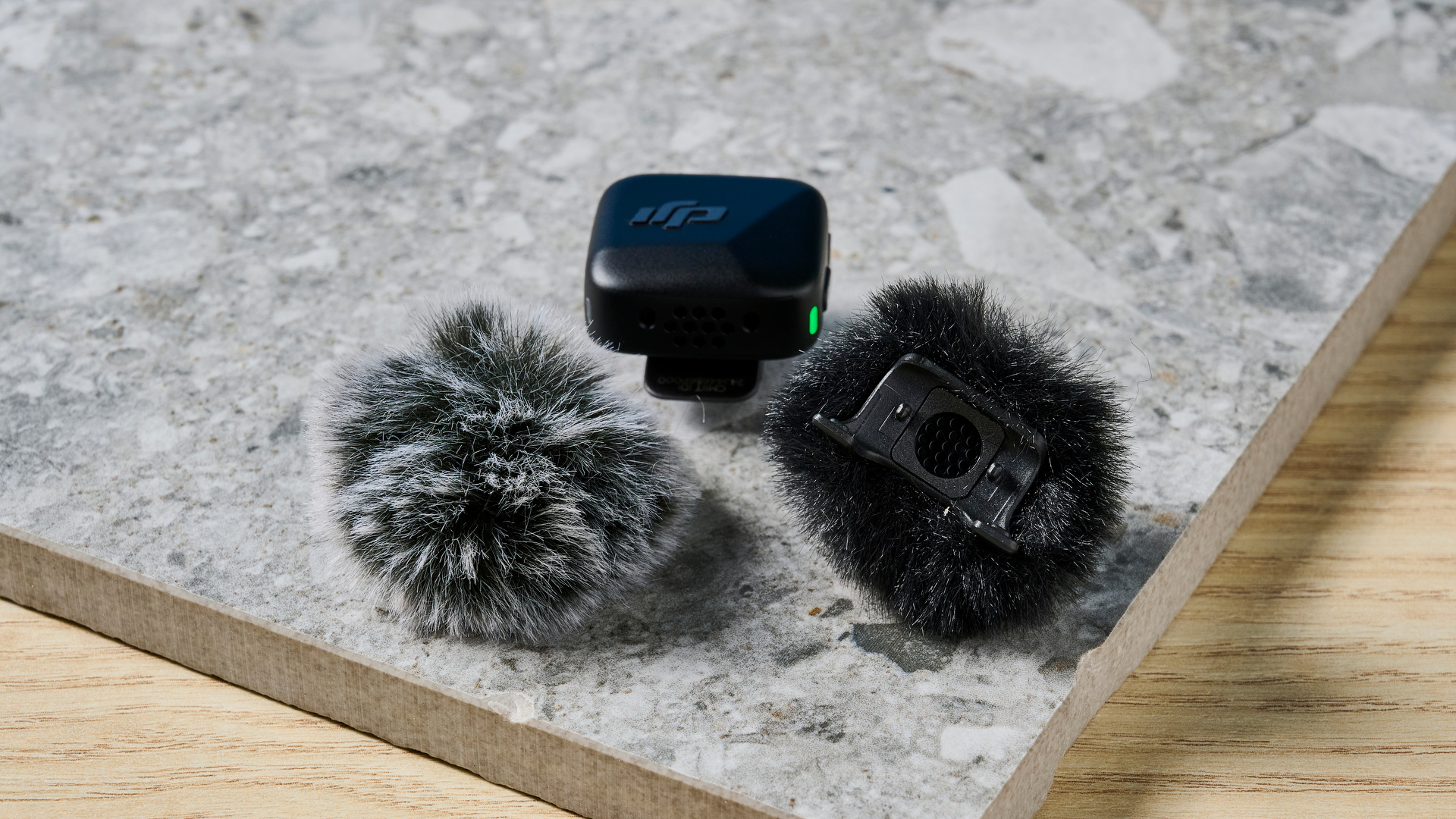
This mic is designed for general content creation, and features two levels of active noise cancellation aimed at boosting vocal clarity to that end. I’ll discuss those more a little later, but even without cancellation enabled, the Mic Mini is a decent little microphone for creators. As you can hear in the sample footage below, even with the noise cancellation off, my vocals were still very clear, even in noisy situations, and the timbre of my voice was captured faithfully.
Dual-level noise cancellation
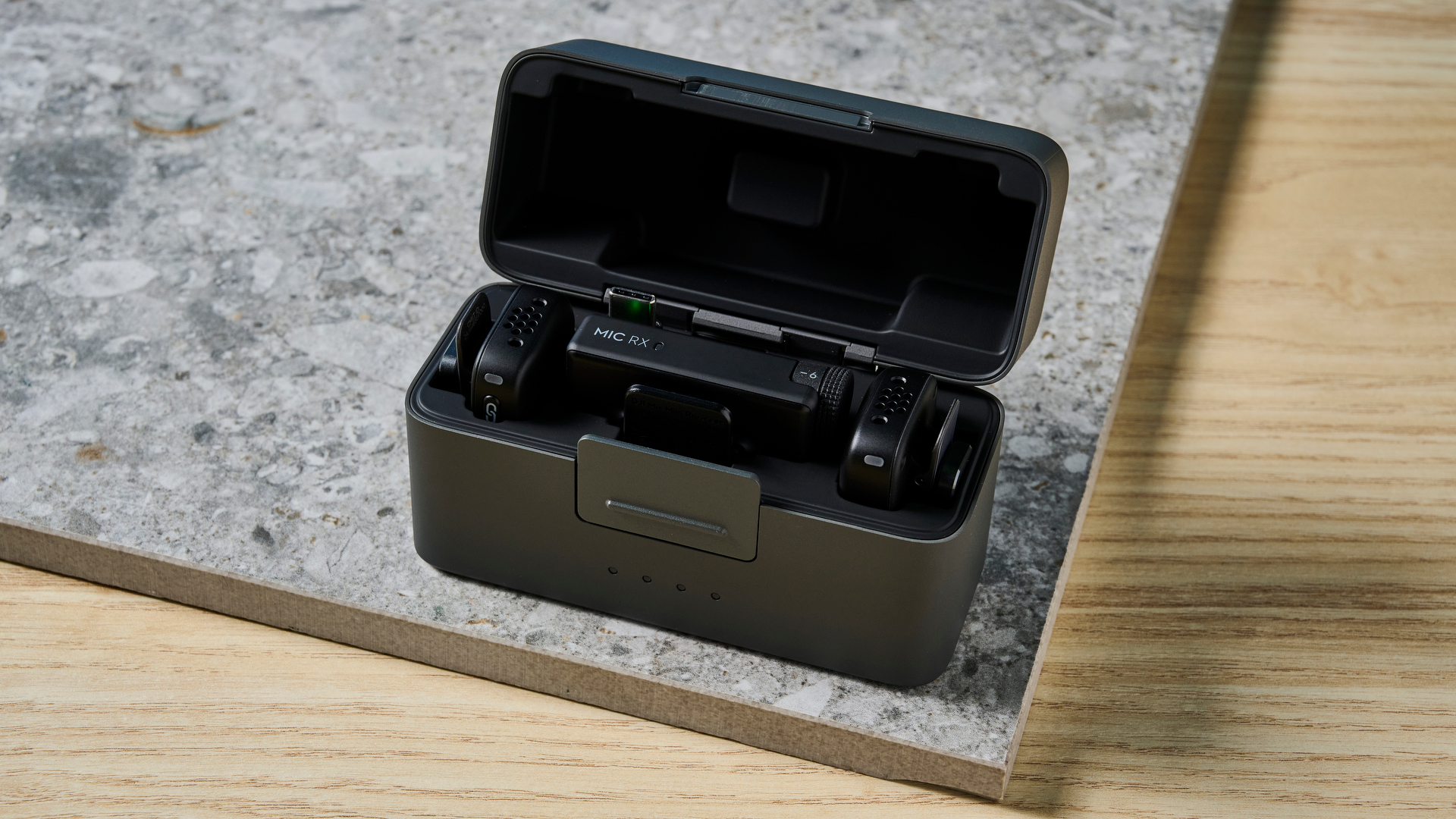
The low cancellation level is designed for internal environments, where it’ll cut out fans or background hubbub. I tested the mic while playing a coffee shop white noise track to simulate a busy cafe. In the video above, the noise cancellation did a great job at lowering the level of the ambient noise (without wiping it out completely and feeling unnatural), drawing focus to my vocals.
In the video below, you can hear the audio with noise cancellation off. The background cafe white noise is much more distracting, although my voice sounds richer.
The higher level of noise cancellation is intended for noisier outdoor environments, and works effectively. I shot the video below next to a busy freeway using the high cancellation setting and it did a fantastic job at reducing the traffic noise to make my voice more prominent. It'll be a fantastic choice for motovloggers to mount inside their helmet for in-ride commentary, allowing their voices to be heard over wind, engine and exhaust noise.
In contrast, the clip below is shot next to the freeway but with noise cancellation off. Again, my voice certainly has a richer tone, but the loud traffic noise is more distracting — I’m happy to sacrifice a bit of vocal depth for the reduced traffic noise.
Noise cancellation isn’t perfect for all scenarios, and it’s primarily intended to help clear up background sounds to emphasize vocals.
If you want to faithfully preserve the depth and richness of certain sounds — including vocals, but also things like engine noise when shooting motovlogs — the Mic Mini performs much better with the noise cancellation turned off. The same was true for the DJI Mic 2.
Recording features
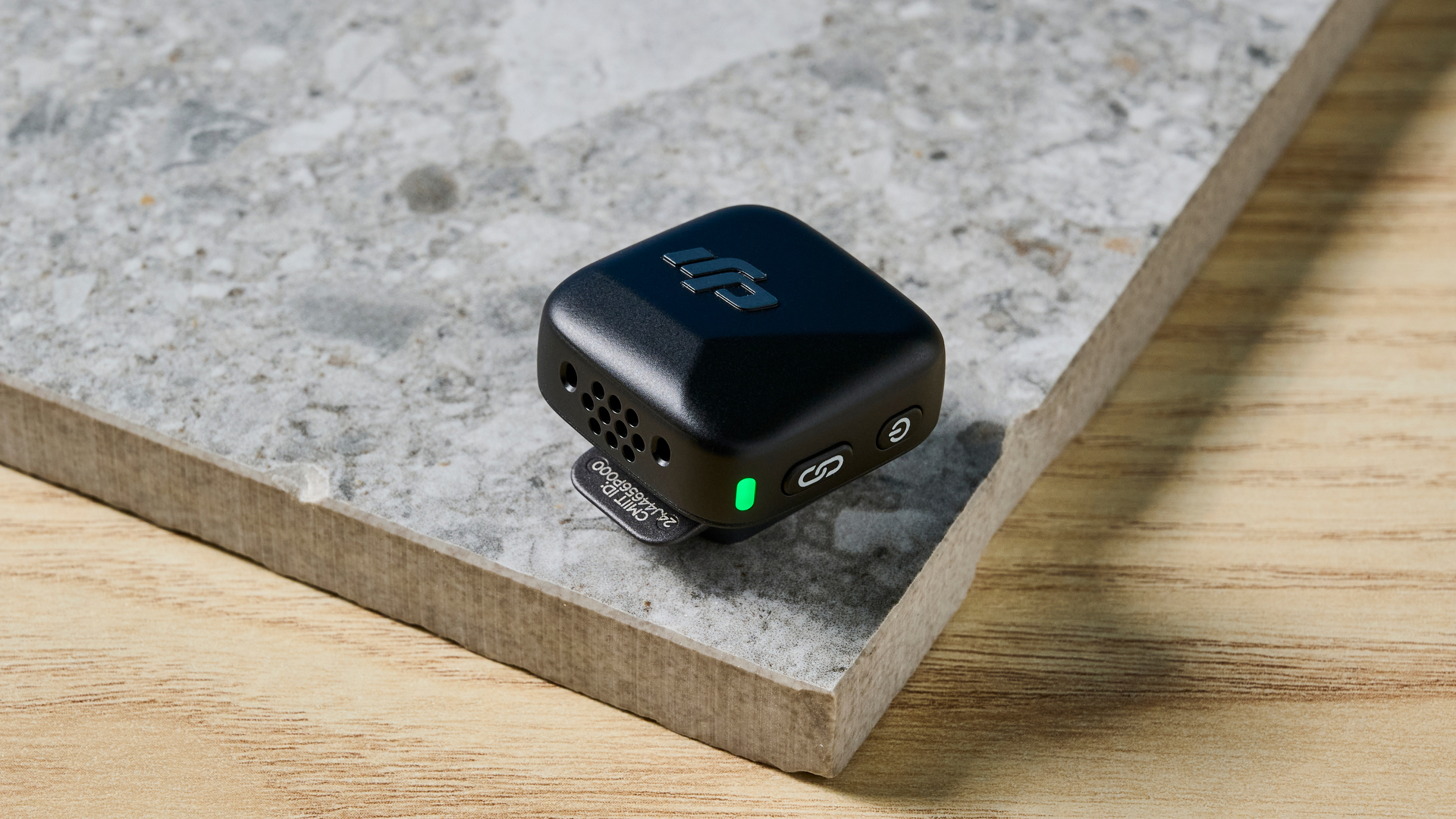
If you’re shooting in extremely loud scenarios or wide dynamic audio ranges, the DJI Mic 2 is a much better shout thanks to 32-bit float recording, so you won’t need to worry about gain levels. The Mic Mini does not record 32-bit float, although features a Safety track that adjusts gain by -6dB. That said, the Mic Mini did a very respectable job in the audio clip below. This clip was shot in a loud environment on a motorcycle, but the audio remains clear and distortion-free, with the deep tones of the engine and exhaust sounding great.
The Mic Mini connects to DJI devices using “OsmoAudio”, which the company won’t tell me much about (I’ve asked DJI for clarification on how this works and will update this review when I know). With other devices, it simply uses Bluetooth and audio quality takes a hit, with more distortion and tinniness. If you’re using the Mic Mini with a GoPro, Insta360 or smartphone camera, you’ll want to buy an RX + TX bundle and connect the RX to your camera using a TRS cable or USB-C/Lightning connector.
If you need the highest fidelity from your wireless mic, if shooting professional-grade studio video for example, I’d recommend splashing out more on a microphone with more controls and 32-bit float, like the DJI Mic 2 or Rode Wireless Pro.
DJI Mic Mini review: Battery life
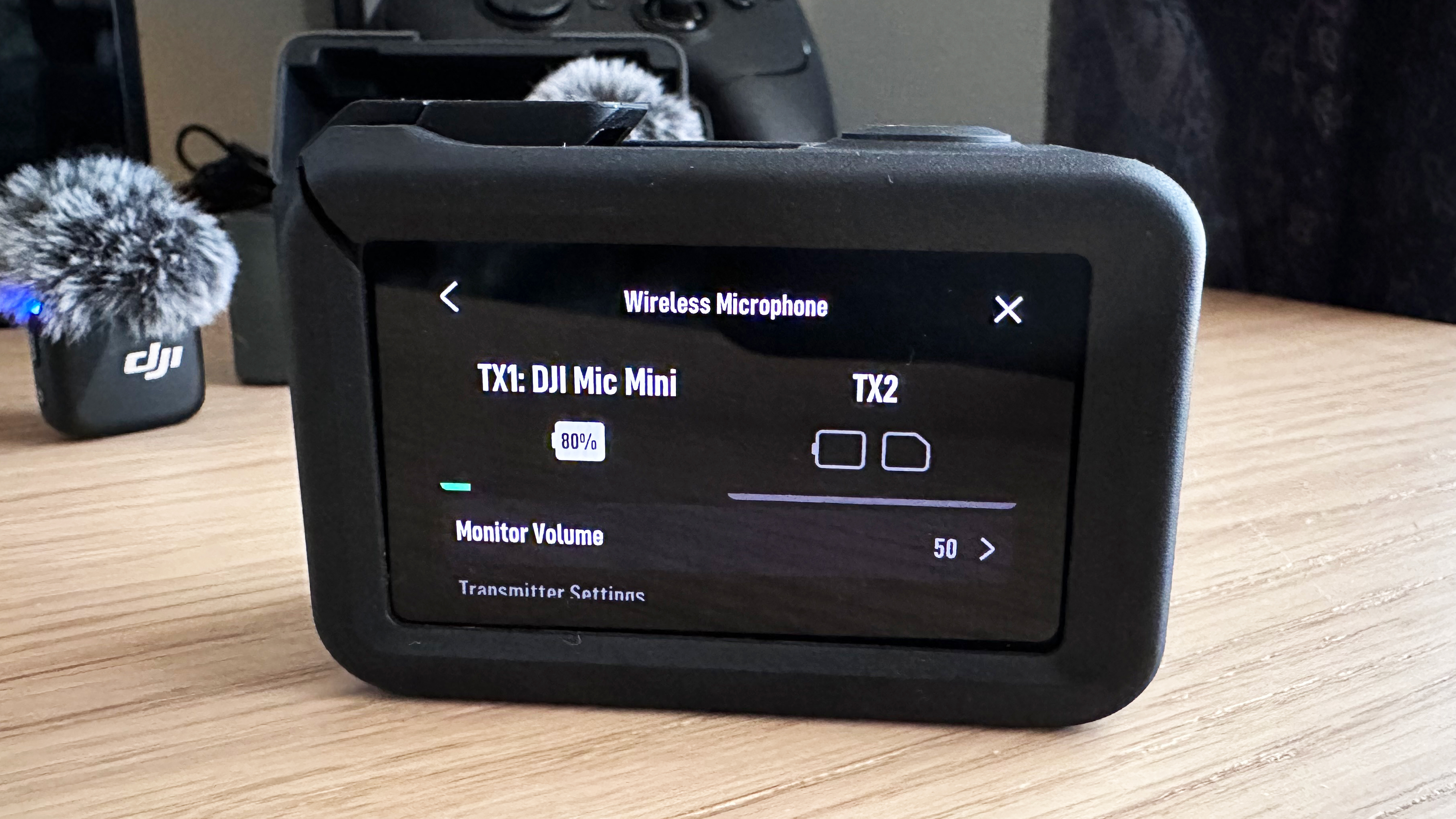
Each Mic Mini TX unit has a maximum 11.5 hour battery life, according to DJI, while the RX unit will net you 10.5 hours. Those figures are predicated upon specific usage assumptions, so I was expecting less in real terms, but a two hour recording ate up around 20% of the battery, so you can expect around 10 hours per TX unit, which is still pretty good. Each transmitter takes 90 minutes to charge via USB-C.
Working out how much battery each TX and RX unit has can be a bit fiddly if you aren’t hooked up to a DJI camera, and will involve checking the user manual. However, on my Osmo Action 5 Pro, it was easy to check the mic battery via the settings menu.
DJI Mic Mini review: Verdict
If you’re a new content creator looking to invest in your first microphone, especially if you’re on a budget, the DJI Mic Mini is an easy recommendation. It’s a much better purchase than its nearest competitor, the Rode Wireless ME, which offers comparatively few features.
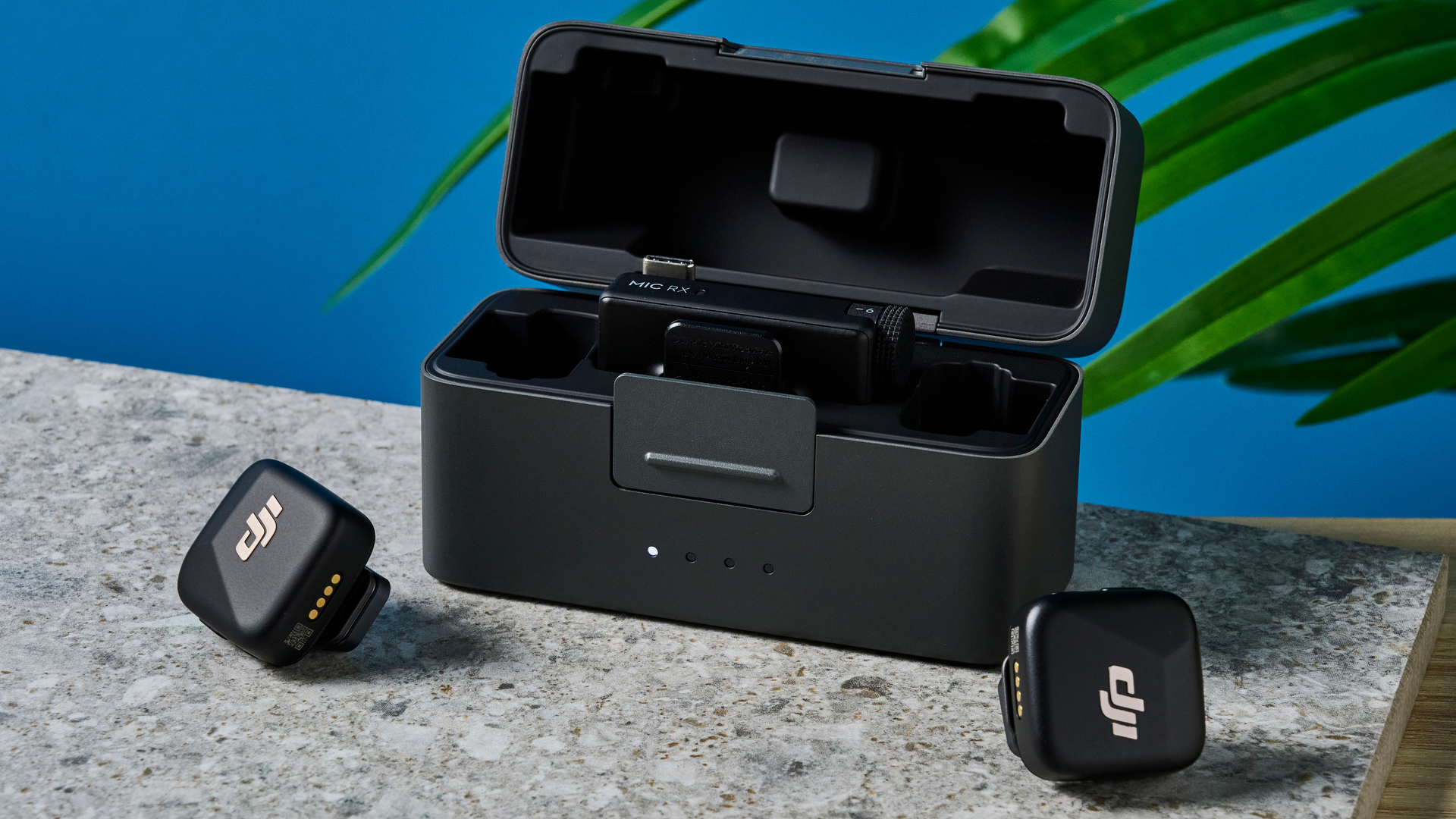
The Mic Mini’s modular availability and versatile wireless connectivity let you only buy what you need, so you can bag yourself improved audio quality for well under $100 if you only need a TX. Its diminutive size also makes it a very flexible system in regards to mounting positions, although I wish its clip and magnets were more secure.
Audio quality is decent, and the noise cancellation modes will come in very handy for content creators shooting in a variety of different scenarios. It works best with DJI gear, where you’ll be able to make full use of the super-handy wireless connectivity. If you use other gear, it works just like any other wireless microphone, so you won’t lose out. However, for those getting serious about content creation or shooting in loud environments or wide dynamic ranges, the DJI Mic 2 is still a better shout thanks to 32-bit float recording and much higher levels of onboard control. That said, for such a tiny mic, the DJI Mic Mini packs quite the punch.

Peter is Reviews Editor at Tom's Guide. As a writer, he covers topics including tech, photography, gaming, hardware, motoring and food & drink. Outside of work, he's an avid photographer, specialising in architectural and portrait photography. When he's not snapping away on his beloved Fujifilm camera, he can usually be found telling everyone about his greyhounds, riding his motorcycle, squeezing as many FPS as possible out of PC games, and perfecting his espresso shots.
